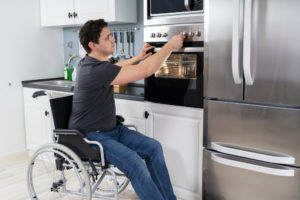Homeowners insurance reimburses you if fire, wind, or even an act of vandalism damages or destroys your home.
Still, this coverage might not protect you from some of the most catastrophic events that can wreck your living quarters.
There are other types of insurance that will cover the home from excluded events, such as floods and earthquakes.
But if you fail to purchase this type of coverage before damage occurs, the money for repairs or rebuilding will come out of your pocket.
What should you do if you are on the hook for such costs? You may have several options, including applying for a personal loan.
Learn more about the types of events homeowners insurance does not cover and how you can pay for repairs when your insurance will not.
How Insurance Works When Your Home Is Damaged
Your homeowners insurance will only cover damages to your home if they fall within the scope of your policy.
Different types of homeowners insurance are available, but the most popular type is known as “special form” coverage, says the National Association of Insurance Commissioners.
This type of homeowners insurance protects you in the event of all types of damage except those that your policy specifically names as not being covered.
If a covered peril causes damage to your home, follow the claims procedures and policies outlined by your insurance company.
If you are unsure what these are, talk to your agent or an insurance company representative.
As a general rule, you can expect the claims process to unfold as follows:
- Contact your insurer or agent and find out exactly how to proceed.
- Take pictures or video of the damage.
- Make temporary repairs that prevent further damage to the property.
- If you need to move out of the home for a period, keep all receipts for meals, temporary lodging, and related costs.
- Wait for an adjuster to arrive to assess the damage.
The process of being paid for your claim also may differ slightly by insurer.
Typically, the adjuster will recommend an amount you should be paid, and if you agree, you will receive that amount.
What Insurance Doesn’t Cover
Your homeowners insurance will cover you for most of the types of damage that might occur to your home, but there are some crucial and costly exceptions to this rule.
For example, those with special form homeowners insurance will not be covered for the following:
- Flood
- Earthquake
- War
- Nuclear accident
Other perils also might fall outside the scope of your policy’s coverage. If this is the case, the perils will be named in your policy.
It’s important to remember that your homeowners insurance coverage will not kick in until you have paid your deductible, which can range from a few hundred dollars to $1,000 or more.
It’s possible that skimping on homeowners insurance may leave you without enough coverage.
If damages exceed the amount of coverage you have purchased, you will be responsible for finding the money to cover that excess amount.
How to Pay for Home Repairs Not Covered by Insurance
Having to pay out of pocket for damages to your home can be a scary prospect. Fortunately, you have several options for getting the money if you do not have enough money saved to pay the bill.
Personal loan
Some homeowners may prefer to apply for a personal loan and use the proceeds from that loan to pay for repairs.
Unlike a home equity loan or cash-out refinance, you won’t be using your home as collateral.
In this type of loan, the lender gives you an amount of money up front and you pay it back over time in installments.
Your credit score, income, debts, and other factors will determine whether you are eligible for the best personal loans and the rate you will pay.
Home equity loan
Another option to pay for home repairs not covered by insurance is to use funds from a home equity loan or home equity line of credit.
In this situation, you use the equity in your home as collateral for a loan that provides the money you need to complete the repairs.
It’s basically a second mortgage on your home, which means if you ever get in a bind and can’t make the payments, the lender can foreclose on your home, even if you aren’t late with your first mortgage payment.
Cash-out refinance
Others may choose a cash-out to refinance to fund their repairs.
With this type of refinancing, you turn your equity into cash by taking out a new mortgage that is bigger than your existing mortgage balance.
The difference between these amounts is paid out to you in cash that you can use for any purpose. As a result, you’ll still have just one mortgage payment, but it will be higher for the entire life of the loan.
Credit card
If the damages are relatively minor, you could use a credit card to cover the costs.
This may be the best route to choose if you’re able to pay off the credit card charges in a month or two.
If you can’t pay off the charges fairly quickly, you’ll start to rack up interest charges.
Pros and Cons of Borrowing to Pay Home Repair Costs Not Covered by Insurance
Why a Personal Loan?
Personal loans can be a good option for some people, especially for those who do not have enough equity in their home to qualify for a home equity loan, home equity line of credit, or refinance.
Another advantage of using a personal loan for home repairs is that you are not using your home as collateral.
When you use your home as collateral to get a loan, you put it at risk should you be unable to make your payments. In a worst-case scenario, you could lose the home.
A personal loan may be a better choice than a credit card if your out-of-pocket cost for repairs will run into thousands of dollars.
You may not have that much credit to use, and if you max out your credit card, your credit score could drop.
However, personal loans are not right for everybody, especially if they come with a high interest rate or excessive fees.
Comparing quotes from several lenders and making sure you fully understand any fees associated with each personal loan is the best way to make sure you get a good deal on this type of loan.
Frequently Asked Questions (FAQs)
Is separate flood and earthquake coverage available?
In a pinch, you can turn to products such as personal loans, home equity borrowing or a cash-out refinance to pay for costs not covered under your homeowners insurance policy.
But a better option is to purchase add-on insurance coverage that will protect you in the event of damages from events such as floods and earthquakes.
The National Flood Insurance Program offers flood coverage, usually at a reasonable cost.
Earthquake insurance is available both as a standalone policy and, at an additional cost, as an endorsement to your standard homeowners insurance policy.
If you are worried about not having insurance for a specific peril, talk to your insurance company about the options it offers for additional coverage.
Remember, you need to purchase any standalone coverages or endorsements before damage occurs. Once your home has been damaged, it is too late to buy insurance.
Do I really need flood or earthquake coverage?
With any luck, homeowners will never have to worry about some of the types of damages typically excluded from a homeowners insurance policy, such as those related to a war or nuclear accident.
However, damages associated with other types of coverage exceptions are much more likely to occur.
For example, flood damages are extremely common. In fact, floods are the most common and costly of all natural disasters in the U.S., according to the Federal Emergency Management Agency.
The risk of earthquake damage is primarily concentrated along the West Coast. Yet, it is essential to note that earthquakes have occurred in all 50 states and that some of the most damaging temblors have occurred in areas such as the Midwest.










